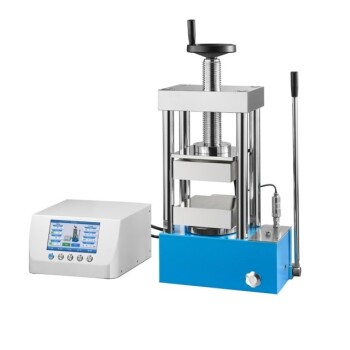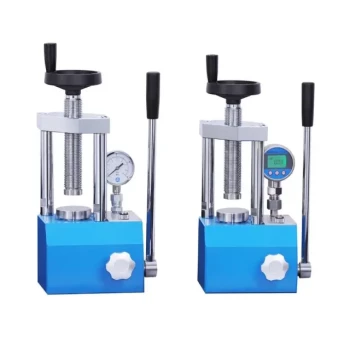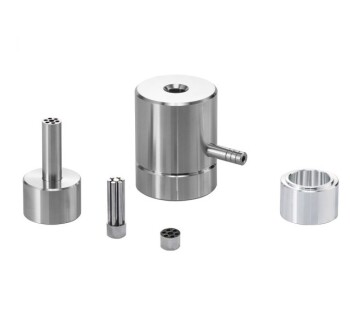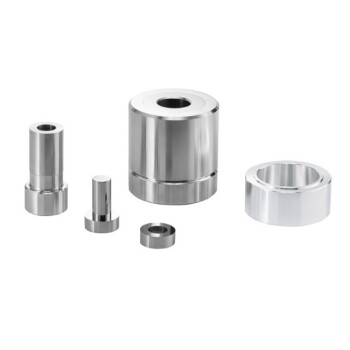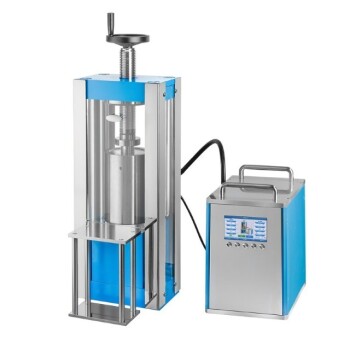At its core, required maintenance for a laboratory hot press plate involves a regular cycle of cleaning, inspection, and component replacement. Key tasks include weekly replacement of the protective upper liner plate, dismantling the assembly to remove trapped debris, checking for loose hardware, and inspecting both the liner plate and silicone rubber pad for any damage that could compromise results.
The goal of hot plate maintenance extends beyond preventing failure. It is fundamentally about ensuring the uniform transfer of heat and pressure—the two most critical variables for achieving consistent, high-quality, and reproducible outcomes in your work.
The Role of Each Component
To perform effective maintenance, you must first understand the function of each part of the hot plate assembly. The system is designed for both durability and precision.
The Hot Press Plate
This is the main structural and heating element of the press. It is designed for longevity but is susceptible to surface damage and contamination, which is why it must be protected.
The Liner Plate
The liner plate is a sacrificial shield. It sits between the main hot press plate and your sample, protecting the expensive heating element from scratches, spills, and direct contact with materials.
The Silicone Rubber Pad
Often used in lamination or applications requiring conformal contact, a silicone pad helps distribute pressure evenly across the entire surface of the sample, compensating for minor surface irregularities.
A Practical Maintenance Schedule
A disciplined schedule is the most effective way to ensure reliability. These tasks can be broken down into daily, weekly, and monthly routines.
Daily: Post-Operation Cleaning
After the final run of the day and once the equipment has cooled, the work surfaces should be wiped down. This prevents the accumulation of dust and residual materials that could become baked on in subsequent cycles.
Weekly: Liner Plate Replacement
The upper liner plate should be replaced weekly. This is the single most important routine to maintain pristine surface quality on your finished products and prevent cross-contamination between different runs.
Monthly: Deep Inspection and Cleaning
Once a month, the liner plate assembly should be dismantled. This allows you to perform a thorough cleaning and a more detailed inspection.
- Remove Debris: Carefully remove the liner plate and any underlying pads to clean out trapped dust, resin, or other debris.
- Check Screws: Verify that all screws holding the assembly are tight. Vibration and thermal cycling can cause them to loosen over time.
- Inspect for Damage: Examine the old liner plate and the silicone rubber pad for cracks, tears, or excessive hardening. A damaged pad will not distribute pressure evenly.
- Check Gaps: Ensure the gap between the reassembled liner plate and the main hot press plate is minimal to promote efficient heat transfer.
Understanding the Risks of Neglect
Skipping maintenance introduces variables that undermine the quality and repeatability of your work. Understanding these risks highlights the importance of a consistent routine.
The Impact of Trapped Debris
Even small particles trapped between the plates create pressure points. This leads to uneven thickness, poor surface finish, and inconsistent density in the final product.
The Consequence of Damaged Pads
A compromised silicone pad fails at its primary job: distributing pressure. This results in areas of low pressure, which can cause delamination or incomplete curing.
The Danger of Structural Deformation
Over time, the press's moving beams and hot plates must withstand immense loads. Any physical warping or deformation, however slight, will permanently prevent uniform pressure and must be professionally assessed. This is especially critical for large-format presses.
Making the Right Choice for Your Goal
Your lab's specific priorities should guide the focus of your maintenance efforts.
- If your primary focus is process consistency and reproducibility: Strictly adhere to the weekly liner plate replacement and daily surface cleaning to eliminate surface quality as a variable.
- If your primary focus is equipment longevity and avoiding downtime: Prioritize the monthly deep cleaning and inspection to catch issues like loose hardware or pad degradation before they cause a failure.
- If your primary focus is high-quality surface finishes: The weekly liner plate replacement is non-negotiable, as even minor liner imperfections will transfer to your sample.
Ultimately, disciplined maintenance is an investment in the quality and reliability of your results.
Summary Table:
| Task | Frequency | Key Actions |
|---|---|---|
| Post-Operation Cleaning | Daily | Wipe down work surfaces after cooling to prevent debris buildup. |
| Liner Plate Replacement | Weekly | Replace the upper liner plate to maintain surface quality and prevent contamination. |
| Deep Inspection and Cleaning | Monthly | Dismantle assembly, remove debris, check screws, inspect for damage, and ensure minimal gaps. |
Maximize your lab's efficiency with KINTEK's reliable lab press machines! Whether you're using automatic lab presses, isostatic presses, or heated lab presses, our equipment is designed for precision and durability. Proper maintenance is key to achieving uniform heat and pressure for consistent results. Contact us today to learn how our solutions can enhance your laboratory's performance and extend equipment lifespan—let's discuss your specific needs!
Visual Guide
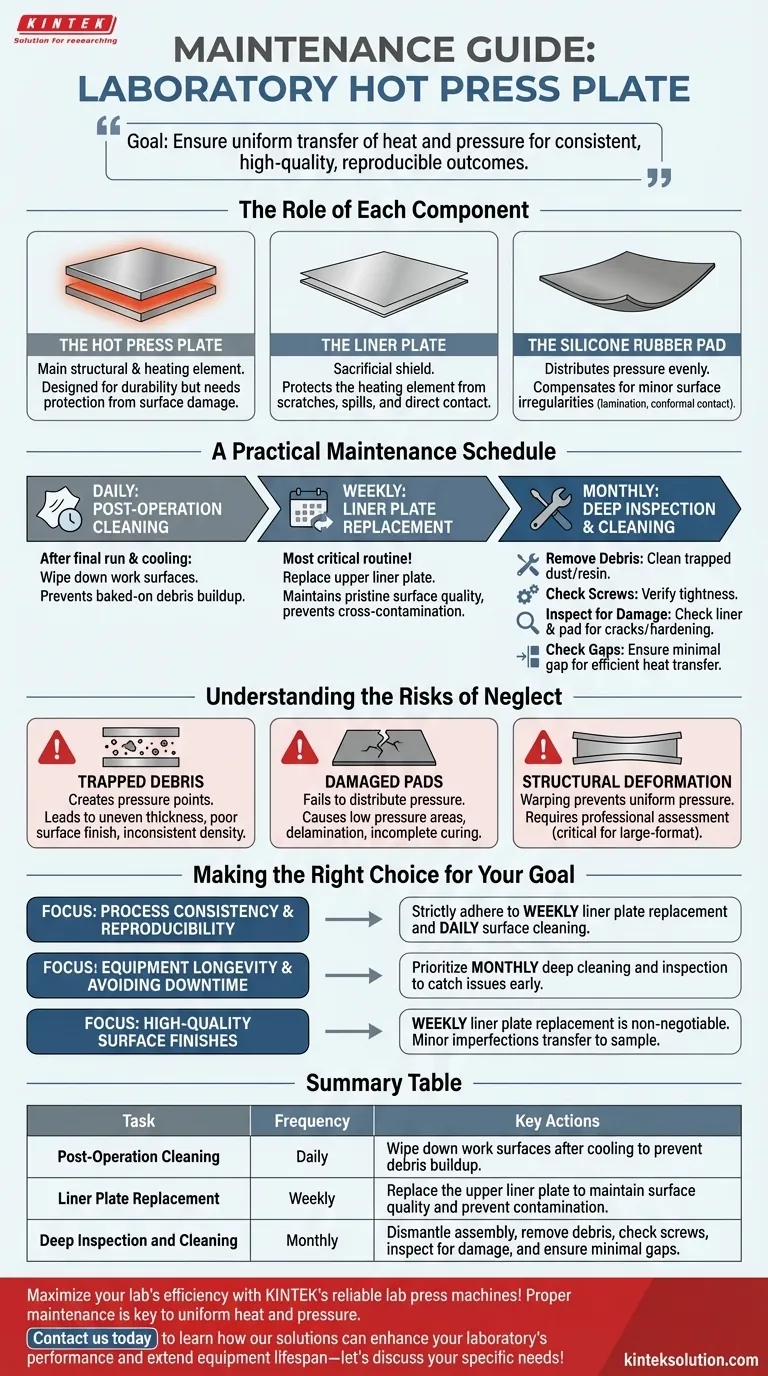
Related Products
- Automatic High Temperature Heated Hydraulic Press Machine with Heated Plates for Lab
- 24T 30T 60T Heated Hydraulic Lab Press Machine with Hot Plates for Laboratory
- Laboratory Manual Heated Hydraulic Press Machine with Hot Plates
- Heated Hydraulic Press Machine with Heated Plates for Vacuum Box Laboratory Hot Press
- Automatic Heated Hydraulic Press Machine with Hot Plates for Laboratory
People Also Ask
- What are the applications of hydraulic heat presses in material testing and research? Enhance Precision and Reliability in Your Lab
- How are heated hydraulic presses utilized in material testing and sample preparation? Enhance Your Lab's Precision and Efficiency
- How are heated hydraulic presses applied in the electronics and energy sectors? Unlock Precision Manufacturing for High-Tech Components
- How is a heated hydraulic press used in material testing and research? Unlock Precision in Material Analysis
- What is a heated hydraulic press and what are its main components? Discover Its Power for Material Processing

